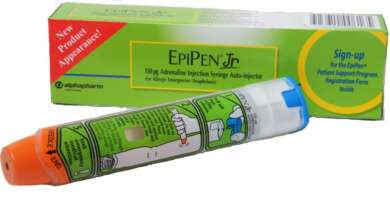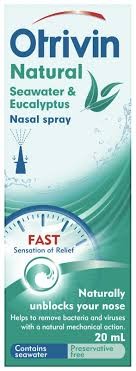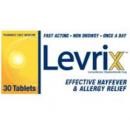Description
Anthisan Cream is an antihistamine cream that is great for Insect Bites, Stings, Hives, Unbroken Chilblains, Sunburn, Minor Burns and Scalds.Recommended Dose:Anthisan should be applied directly to the site of the insect bite, sting or nettle rash 2 to 3 times daily for up to 3 days.For best results use as soon as possible after the Bite or Sting.PurposeAnthisan cream gives relief from pain, Itching and Inflammation from Insect Bites, Stings and nettle rash.PrecautionsDo not use Anthisan Cream if you have eczema or extensively broken skin.Discontinue use should skin sensitivity occur.Anthisan Cream (mepyramine maleate) is a topical antihistamine used to treat insect stings or bites and rashes from contact with plants or allergens. Though popular and widely-used in many parts of the world, it is not approved for use in all areas. It also sees some use in veterinary medicine in many places. The medication works by blocking the action of histamines in the application area. Histamines are released in response to an allergen, which begins the chain of events that lead to unpleasant symptoms of: Rash Itching Pain Inflammation Redness Bumps or hives By blocking histamines from binding with receptors in the area, the above symptoms are reduced or eliminated entirely. Used properly Anthisan Cream is very safe in patients 2 years old and up: It is very unlikely to produce side effects; There are no known drug interactions; There are no known dietary interactions. Patients who have a history of allergic reactions to other medication should use Anthisan Cream with caution; it may produce a localized reaction, symptoms of which include tenderness, inflammation, and more severe pain or itching. Discontinue use immediately if this happens. When to Use Anthisan Cream Anthisan Cream is effective against relatively minor, localized reactions, such as those caused by: Insect bites or stings Skin contact with plants such as stinging nettles or poison ivy Skin contact with allergens such as animals Mild symptoms with an unknown cause Anthisan Cream should not be used over very large areas of skin or in cases of severe reactions, such as in a person who is severely allergic to bee stings. It should also not be used on damaged skin; that is, skin that is broken, infected, sunburned, or otherwise unhealthy aside from the local irritation caused by exposure to an allergen. The medication is unlikely to provide any benefit in symptoms that are not the result of an allergen, such as chemical burns, though symptoms may appear similar. To prevent large amounts of the medication from being absorbed into the bloodstream, which greatly increases risk of adverse effects, the medication should never be applied to mucous membranes such as the eyes, mouth, vagina, or rectum. The application site should not be covered with airtight clothing or bandages. How to Use Anthisan Cream In general, the cream is applied directly to the application site as-needed to manage symptoms. For maximum benefit: Apply Anthisan Cream as soon as possible after first symptoms of a reaction are noticed. Gently rub the cream into the affected area, extending a short way to healthy skin around it. Repeat, if needed, two to three times per day, for up to three days. Continued use after three days is very unlikely to cause harm, but symptoms that persist that long may indicate a more serious condition. Medical attention is advisable if symptoms are still bothersome after several days of treatment. Symptoms often begin to subside just moments after application, but it may take 30 to 60 minutes before improvements are substantial. Effects should last for 6 to 10 hours, depending on the severity of the reaction and individual response to treatment. Follow-up applications work best if applied at the earliest signs that the previous application is beginning to wear off. Misuse of the product, such as using it more frequently or longer than recommended, increases risk of side effects. However, frequent and/or longer use is a widespread practice and very rarely results in adverse reactions. Similarly, while the effects of the medication on unborn or nursing infants are formally unknown, the medication has been widely-used by pregnant and breast-feeding women with no developmental defects reported or suspected as a result.





Reviews
There are no reviews yet.